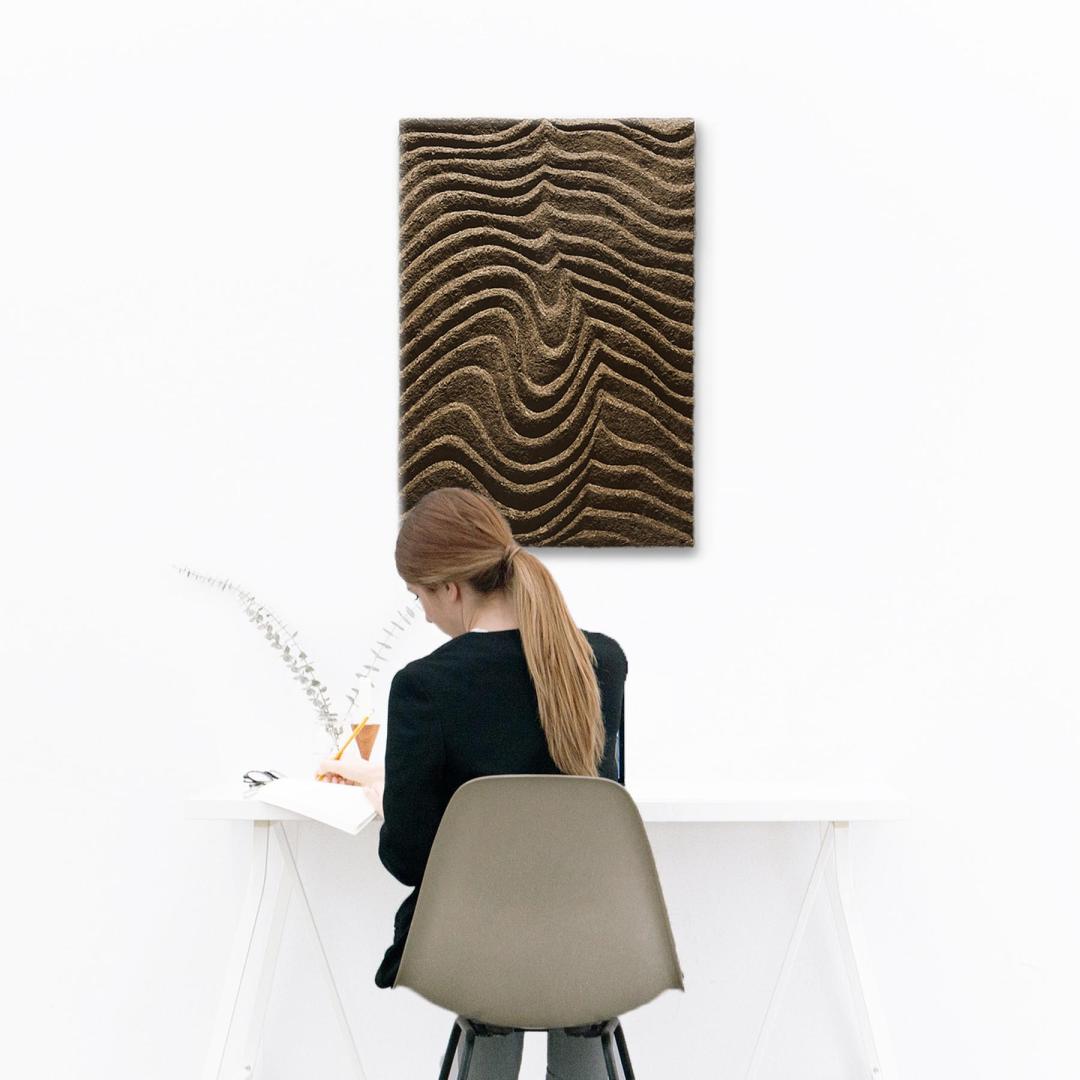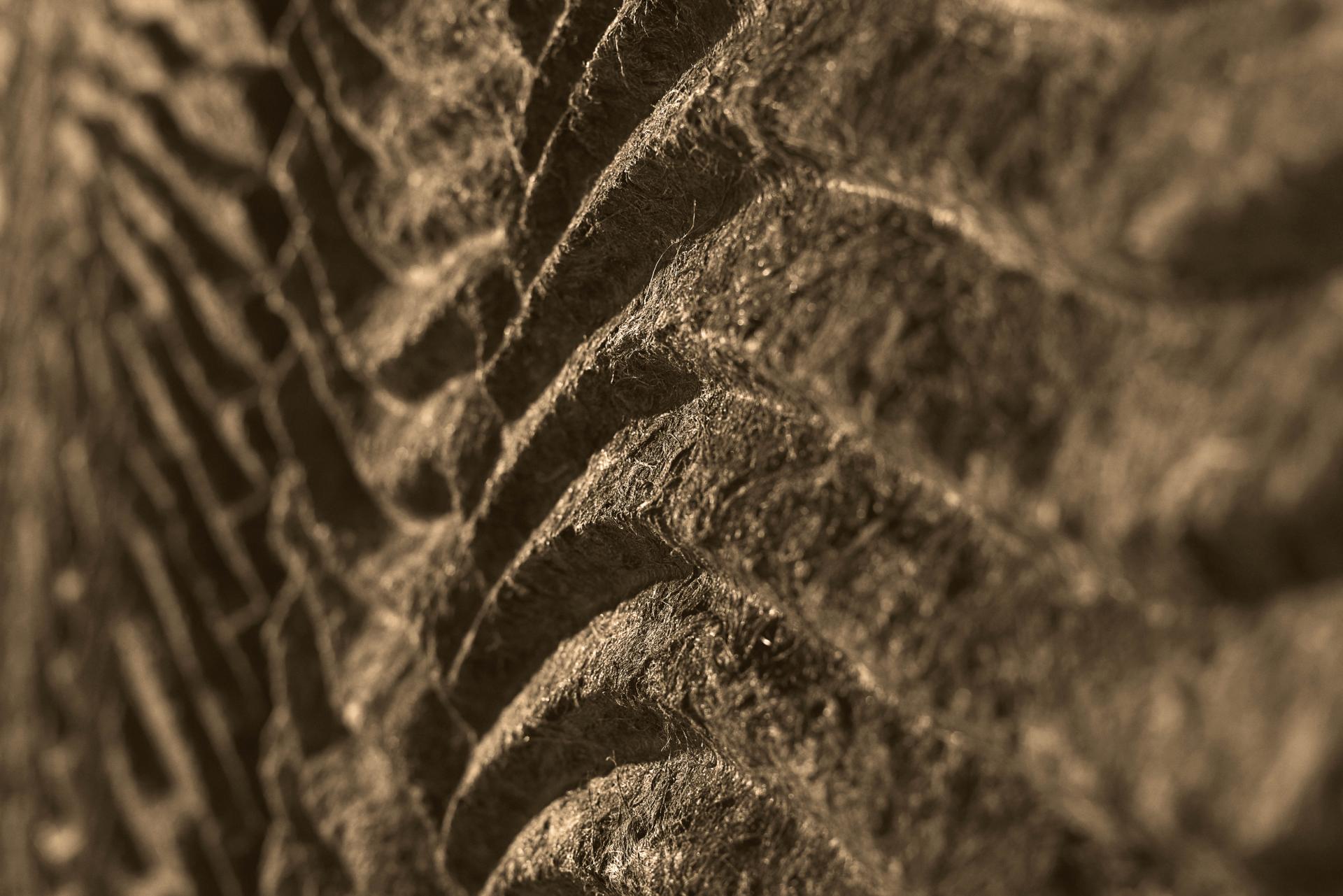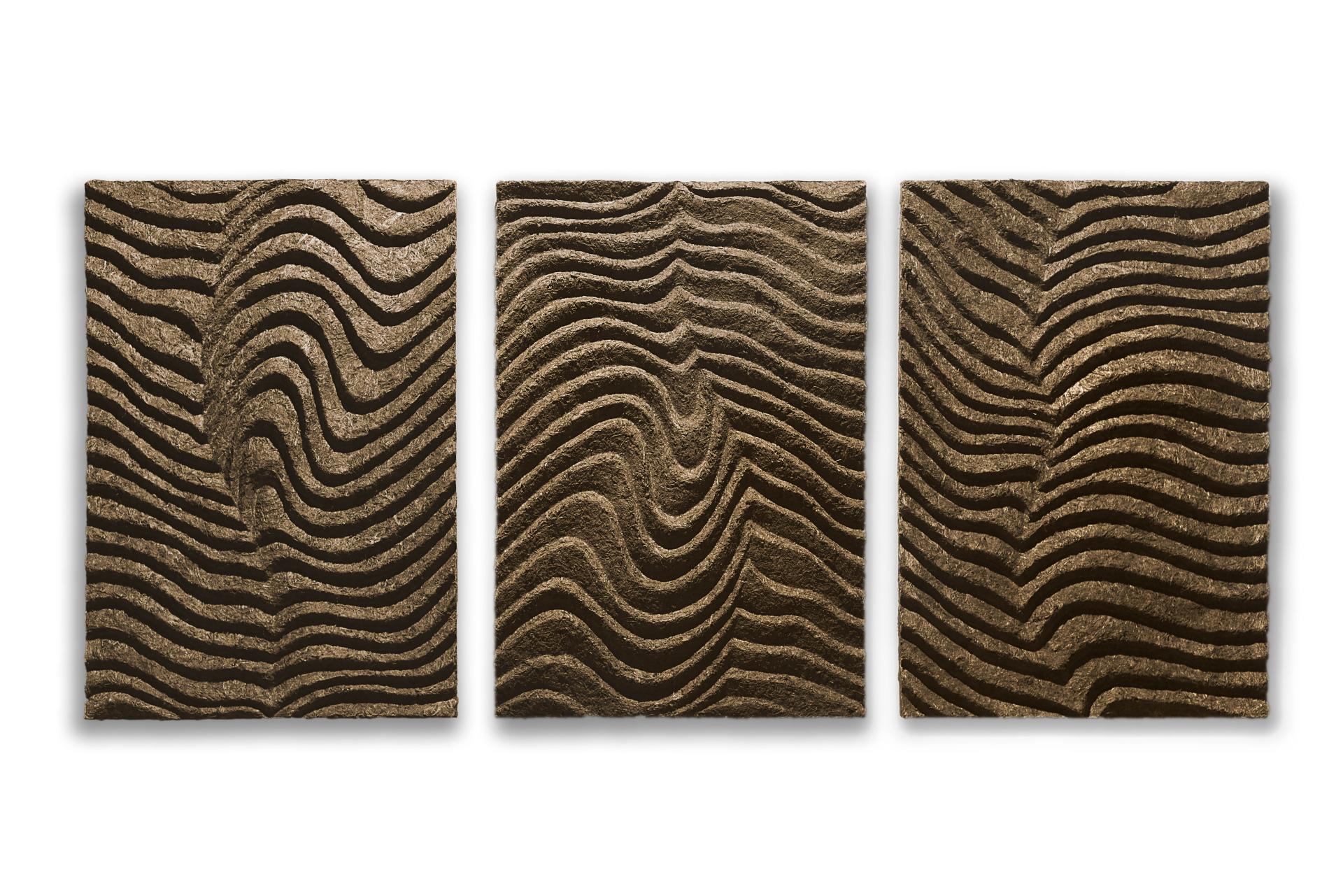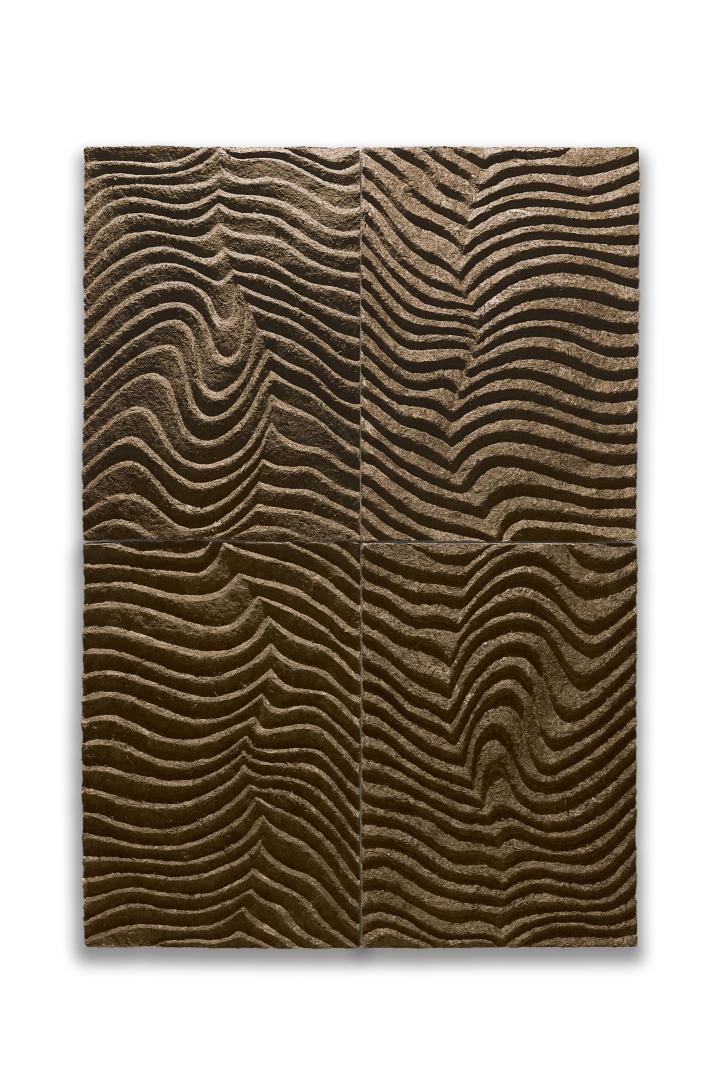KUŠS
Basic information
Project Title
Full project title
Category
Project Description
‘'Kuss'' are sound absorption panels designed to bring calmness into homes, open offices and any other public spaces by absorbing the excessive noise. Panels are made out of ecological and non-toxic composite by using organic rich lake sediments - sapropel as a binder, mixed with natural fibres. The extraction of sapropel helps to improve the quality of freshwater resources and lake ecosystems. By applying the extracted sapropel in design, both the experience of a life in the city and the ecosys
Project Region
EU Programme or fund
Description of the project
Summary
''KUŠS'' acoustic wall panels are nature inspired artwork made of ecological, breathable, and non-toxic raw materials, of biobased origin. Combining the knowledge of designers and researchers, a functional design product with high added value is created. Panels consist of natural fibers (byproducts from industry) in combination with organic rich lake sediments (sapropel) as a binder - a natural resource found in lakes in temperate climatic zones in Asia and Europe. Sapropel reserves in the lakes of Latvia reach 700 - 800 million m3, while sapropel reserves in bogs reach 1.5 billion m3. Sapropel can be considered a renewable resource since lake eutrophication, being a natural process, is continuous. Thus, the development of new possibilities to facilitate sapropel application can support the reclamation of lakes, as well as significantly contribute to the development of bioeconomy. The extraction of sapropel helps to improve the quality of freshwater resources and lake ecosystems. Organic rich lake sediments (sapropel) obtained as a natural resource and at the same time assessed as a byproduct from recultivation of freshwater lakes to reduce eutrophication. Sapropel is an ecological alternative to the inorganic and environmentally harmful binders available on the market, which are used for gluing wood materials. ''KUŠS'' acoustic wall panels composite material is an innovative solution, never before used in the design or building industry. It reaches sound absorption class B, making the product not only aesthetically pleasing but also functional. Acoustic wall panels ‘’Kušs’' are equally suitable for offices, private homes, and public spaces. This product, when finalized, will bring the calmness of the lake into our daily spaces by simultaneously improving the lake ecosystem.
Key objectives for sustainability
Must be stressed that the expanded use of bio-based materials can be considered as an action tool within the sustainable development strategies in European Union. The construction industry consumes 60% of all lithospheric raw materials consumed and has high energy consumption. It is estimated that the building industry is responsible for ⅓ of greenhouse gas emissions. Therefore developing sustainable, environmentally friendly building and design materials is one of the most applicable ways to save energy. To promote the reduction of material and energy consumption, increased use of renewable and semi-renewable natural resources is needed. This would ensure sustainable building construction based on balancing environmental, economic, and social issues. Although our product is too small to solve these global issues, they are a starting point we have chosen to better understand the material and its qualities. The more research is done, the more we can understand in what ways we can expand to have a more significant impact on the building industry. Kušs panels are an eco-friendly product, made with a natural approach to design and are a way of promoting and evoking interest in sustainable building solutions. New uses of various natural materials, industrial byproducts, and renewable local resources are an important step to sustainable development. Our idea of using natural local resources in new sustainable ways goes together with sustainable development locally and globally. The environment benefits from this product in two ways - sustainable and circular use of resources - ingredients are natural and byproducts of manufacturing (also sediments from lake recultivation process).
Key objectives for aesthetics and quality
The pattern of 'KUŠS'' acoustic wall panels is inspired by the underwater sand ripples that one can find at the banks of a river or beaches of the lakes and the sea. The free-flowing lines also serve as a reference to the flora that surrounds the lake and that has deposited at the bottom of it, later forming a sapropel. The purpose of this product is to create feelings similar to those when one is surrounded by nature. The visual appearance of Kušs panels, alongside their sound absorptive qualities, bring calmness and create a revitalizing environment in our daily areas such as offices, restaurants, and dwellings. The natural fibers and bits of moss that form the material make it seem like it is a part of the earth, an element brought from a wild forest. Each panel has four screws embedded in its back corners. They can be joined together as one set and then hung onto the surface, attached to it only with its top and bottom parts, preventing the wall or ceiling from being ruined with glue stains or drilling holes. These properties make the whole acoustic wall easily moveable and they allow the user to switch panel’s places and turn them upside down, thus changing the appearance of the acoustic wall. ‘'Kušs'' panels can be used for covering entire walls or as a freely assembled art piece.
Key objectives for inclusion
It has been one of the main aims of the Kušs panels that all of the materials that are used are industry byproducts.
Lake recultivation brings the sapropel resource, which we use as the base ingredient. This allows sustainable use of local resources - producing increased value products while reducing waste and improving the quality of the environment. The use of lake sediment from lake recultivation has been researched, but no widespread practice exists. The use of lake sediment would mean the conservation of lakes, which otherwise would grow into a bog, and, in long term, we would lose the water objects. By using the lake sediment as the main ‘'Kušs'' panels ingredient, we are making sure the lakes are saved.
We develop a new composition – a mixture of various biodegradable byproducts and biowaste with a natural binder applicable for making completely natural acoustic panels with functional characteristics at a higher level than that for already known commercial products. The need of product development is motivated by the target aims of bioeconomy approach such as a) to apply ‘zero waste’ practice vs. the current practice that is largely based on the production and use of fossil materials, synthetic chemicals; b) to apply the use of biodegradable byproducts and biowaste avoiding contamination with plastics; c) to exploit renewable natural resources instead of non-renewable resources (such as peat); d) to follow the requirements of the European Green Deal.
Innovative character
Due to the large amounts of sapropel that can be found in Latvian lakes, ways of using it have been researched in University of Latvia, until now, it has been 8 years. To date, sapropel has been used successfully in agriculture for making substrates and fertilizers. Sapropel has also been widely used in cosmetics.
Yet, such materials, where sapropel has been used as a binder, have not been produced for building industry or design. For the first time, a functional design composite material has been developed using sapropel mixed with various fillers. There is no need to treat sapropel for using it as a binder in materials, unlike it has to be done to use it for other purposes. This is an ecological alternative to the inorganic and environmentally harmful binders available on the market, which are used for creating composite materials.
The product is based on principles of circular economy and sustainable design.
The new technology we have developed also allows us to use different fillers to achieve different types of material with different properties. Biodegradable byproducts and biowaste from various industrial sectors such as agriculture, energy production, wood processing can also be used as fillers. Some byproduct examples are ash, biochar, wood sanding dust, flax and hemp shives, grain processing waste, algae, vermicompost, and others.




